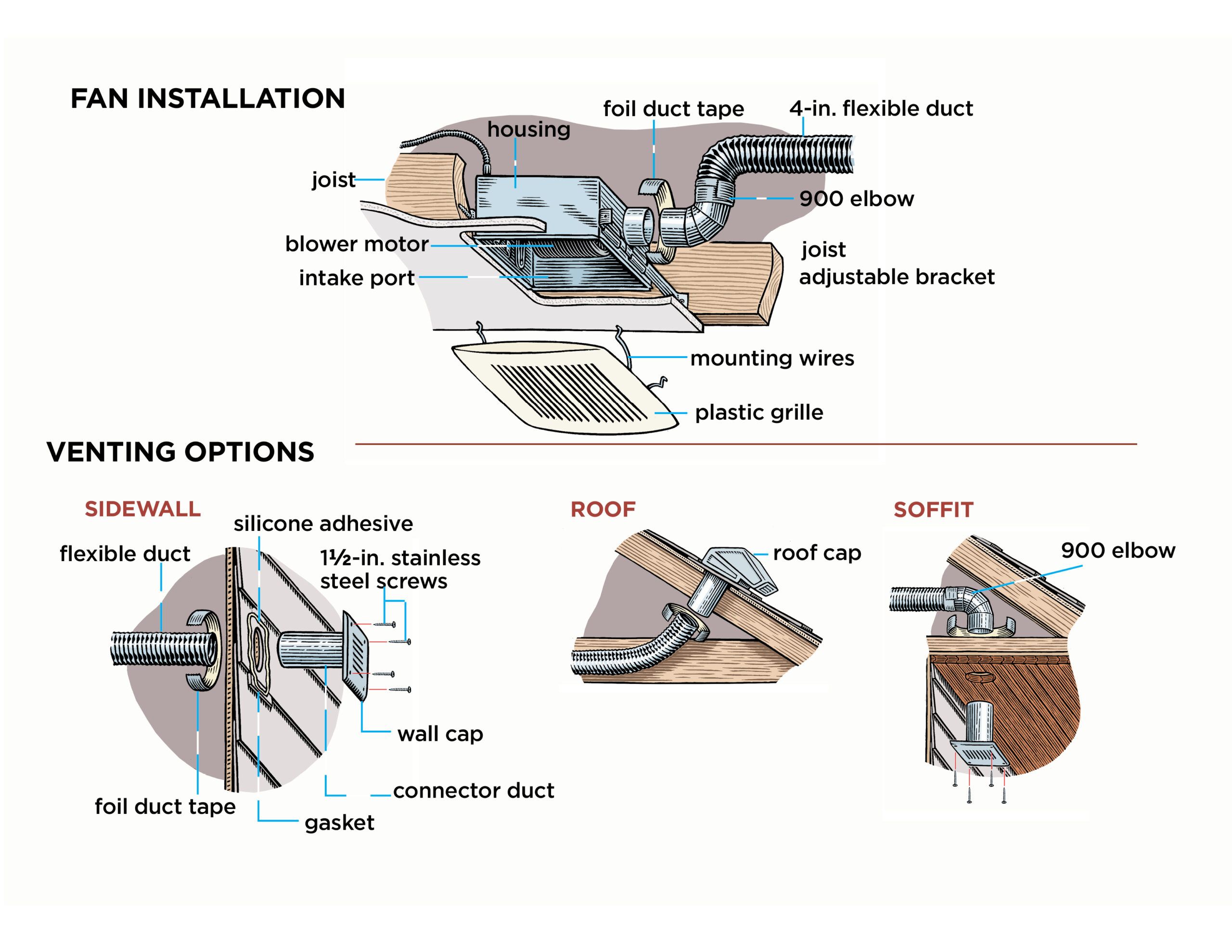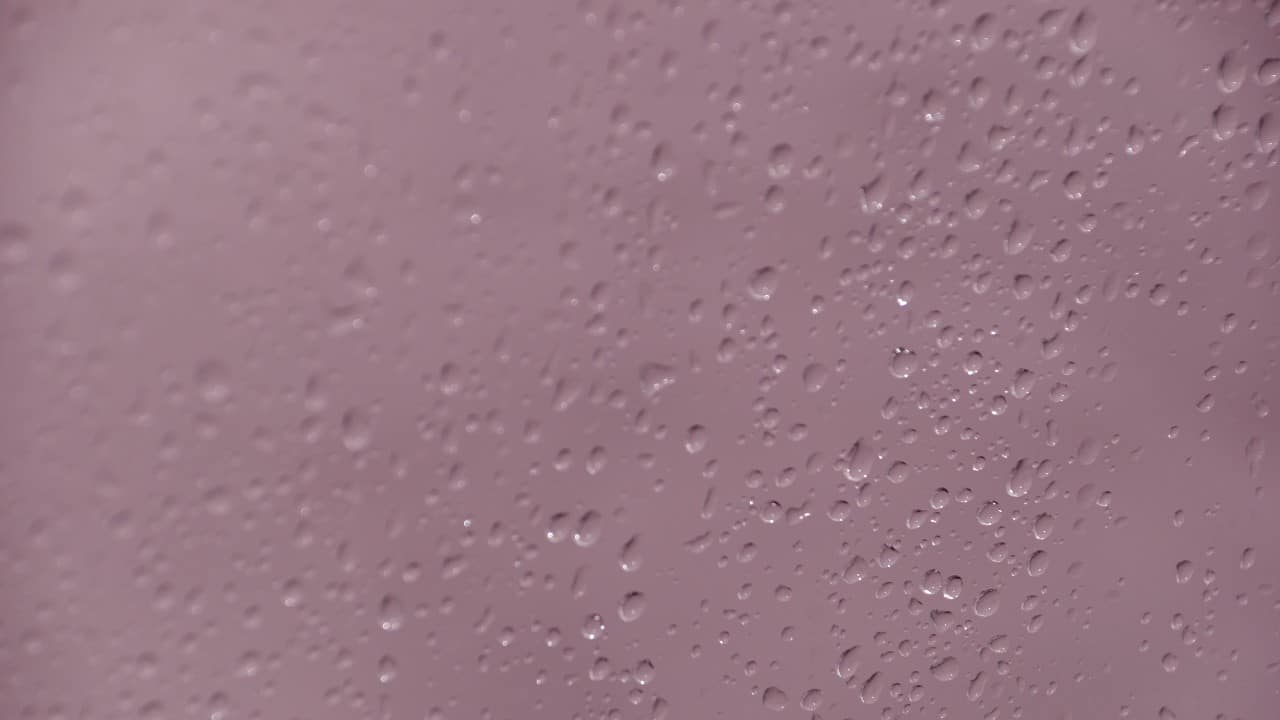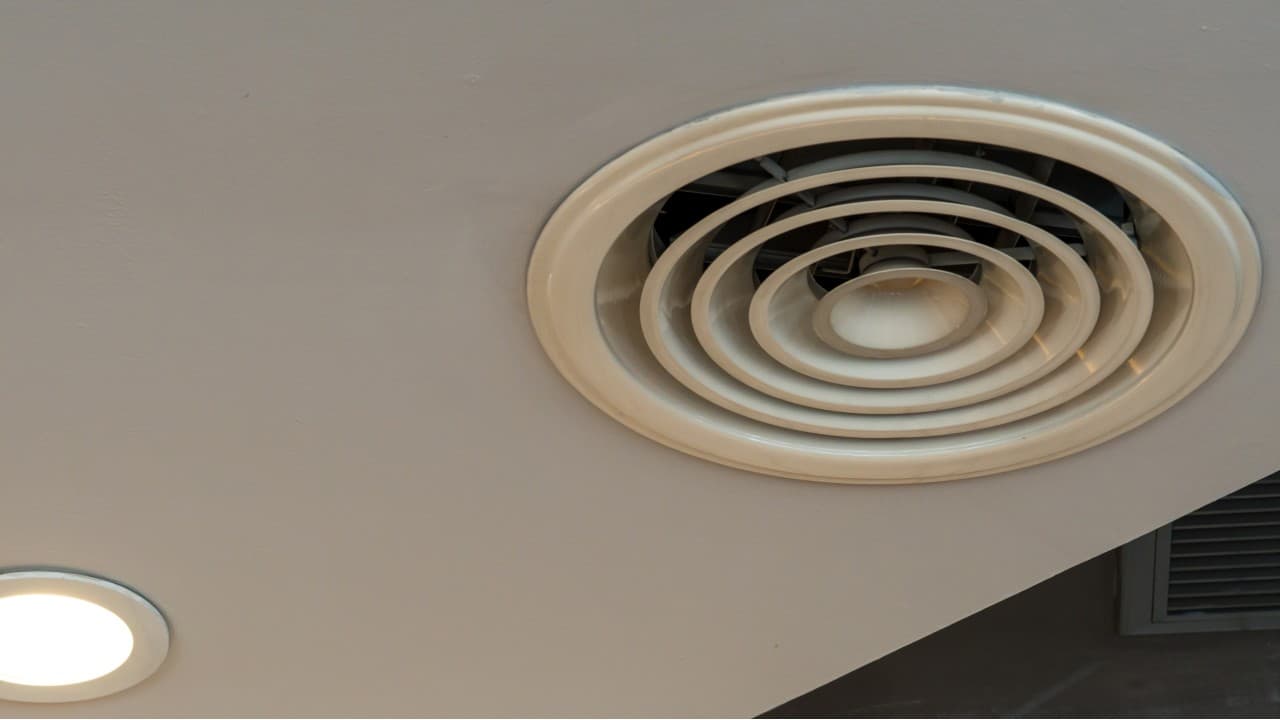Identify Causes of Condensation in Bathroom Fans

Condensation in bathroom fans is a common problem that can lead to mold and mildew growth. It occurs when warm, moist air from the bathroom comes into contact with a cold surface, such as the fan blades or housing. The water vapor in the air condenses into liquid water, which can then drip down onto the floor or other surfaces.
There are a number of factors that can contribute to condensation buildup in bathroom fans, including:
Poor Ventilation
Poor ventilation is one of the most common causes of condensation in bathroom fans. If the bathroom is not properly ventilated, the warm, moist air will have nowhere to go and will eventually condense on the fan blades or housing.
Excessive Humidity
Excessive humidity in the bathroom can also lead to condensation in bathroom fans. This can be caused by a number of factors, such as taking long, hot showers, drying clothes in the bathroom, or having a humidifier in the room.
Inadequate Insulation
Inadequate insulation can also contribute to condensation in bathroom fans. If the bathroom is not properly insulated, the warm, moist air from the bathroom will be able to escape into the attic or other cold spaces, where it will condense on the fan blades or housing.
Fan Size, Placement, and Airflow Capacity
The size, placement, and airflow capacity of the bathroom fan can also affect condensation levels. A fan that is too small or not properly placed will not be able to effectively remove the warm, moist air from the bathroom, which can lead to condensation buildup.
Explore Solutions to Mitigate Condensation

Bathroom fan condensation problem – We’ve explored the causes of condensation in bathroom fans. Now, let’s dive into practical solutions to mitigate this issue and keep your bathroom fresh and dry.
Improve Ventilation
Adequate ventilation is crucial for preventing condensation. Consider the following measures:
- Increase Fan Size: A larger fan can move more air, effectively removing moisture from the bathroom.
- Install Exhaust Vents: Installing vents in the ceiling or walls allows moisture to escape, reducing condensation.
- Open Windows: If possible, open windows during and after showers to let out excess moisture.
Use Dehumidifiers
Dehumidifiers remove excess moisture from the air, preventing condensation from forming. Choose a dehumidifier with a capacity appropriate for your bathroom size.
Insulate Bathroom Walls and Ceilings, Bathroom fan condensation problem
Insulating bathroom walls and ceilings minimizes temperature differences between the inside and outside, reducing condensation. Consider using foam insulation or fiberglass batts.
Analyze Design Considerations for Effective Condensation Management: Bathroom Fan Condensation Problem

Hey guys, so we’ve been talking about how to get rid of that annoying condensation in your bathroom fans. Now, let’s dive into some design considerations that can help you manage it effectively.
Fan Efficiency Comparison
First up, let’s look at the efficiency of different types of bathroom fans. I’ve put together a table to compare their airflow capacity and noise levels:
| Type | Airflow Capacity (CFM) | Noise Level (Sones) |
|---|---|---|
| Axial Fans | 50-150 | 2-4 |
| Centrifugal Fans | 100-250 | 3-6 |
| Inline Fans | 150-300 | 4-8 |
As you can see, inline fans offer the best combination of airflow capacity and noise levels, making them a great choice for bathrooms with high humidity levels.
Fan Placement Best Practices
Next, let’s talk about fan placement. Here are some best practices to follow:
- Install the fan in the ceiling, as close to the center of the room as possible.
- Position the fan at least 6 feet away from the shower or bathtub.
- Ensure the fan is vented directly to the outside, not into the attic or crawlspace.
- Provide a clear path for air to flow from the fan to the outside vent.
Proper Installation and Maintenance
Finally, let’s cover proper installation and maintenance:
- Follow the manufacturer’s instructions for installation.
- Seal all gaps around the fan and vent with caulk or weatherstripping.
- Clean the fan blades and vent regularly to prevent buildup.
- Replace the fan every 5-7 years to ensure optimal performance.
By following these design considerations, you can effectively manage condensation in your bathroom fans and keep your bathroom fresh and comfortable.
Gue pernah punya masalah sama kondensasi kipas kamar mandi yang bikin wallpaper jadi rusak. Nah, ngomongin wallpaper, gue jadi inget waktu gue coba-coba breaking bad wallpaper. Ternyata susah banget ngelepasinnya! Akhirnya gue cuma bisa ngelupasin sedikit-sedikit, tapi tetap aja kamar mandi gue jadi berantakan.
Kembali ke masalah kipas kamar mandi, gue akhirnya beli kipas baru yang lebih bagus dan masalah kondensasi pun beres. Jadi, buat kalian yang punya masalah serupa, jangan lupa cek kipas kamar mandinya ya!
Having a condensation problem with your bathroom fan? It can be a real pain, especially if you have a grey sofa living room that you want to keep pristine. The moisture from the bathroom can cause the sofa to become damp and moldy, which is not only unsightly but also unhealthy.
But fear not, there are a few things you can do to fix the problem and keep your sofa looking its best.